Honey-colored light filters through the hardwoods on this, the first cool morning of the season. The hickory leaves, near chartreuse as newborns in April, are a tired olive after the sear of summer. It’s a transitionary shade, the first subtle strokes from autumn’s palette. Soon they’ll turn vibrant orange, fairly glowing amid the rusty browns, reds, and purples of the oaks.
Hidden in the forest canopy, I hear a gray squirrel’s incisors — those robust teeth that are the calling-card and tool of trade for the rodents — cutting through the thick hull of a hickory nut.
Smells are strongly associated with memories, but sounds can be as well. The invisible gnawing is a nostalgic trigger for me. I turn back into that 12-year-old boy carefully coursing the sound and searching every limb for a tremble. Breathing slows, and I reach a level of focus only dreamt of in my other endeavors. It's all involuntary. Some of it a vestigial instinct, a primal and predatory skill passed down from my Pleistocene ancestors and before that, my reptilian ancestors. But much of it was learned through the decades and lots of my own failure. A little bit nature, a little bit nurture, but it’s who I am at the core.
Shards of hull tumbling through the leaves give away the squirrel’s location long before I see a bushy tail. I circle the tree. The purposeful movements of the squirrel shucking the hickory nut shimmy through the branches.
I bring the Henry .22 rifle to shoulder, settling the crosshairs on the squirrel’s head and squeeze my index finger. The rimfire pops and the squirrel tumbles through the branches. Through the morning, I’m able to collect three more squirrels. I’ve got four others in the freezer at home and that’s plenty for a dinner.
More Like This
Once the most popular form of small game hunting in the United States, squirrel hunting has taken a significant backseat to big game and fowl hunting. But for those looking to try their hand at wild harvest (read: feeding yourself), squirrel is almost certainly the optimal route to take. It's accessible, affordable, sustainable and, perhaps best of all, heart-healthy squirrel meat is decidedly not an acquired taste, even for the most finicky of eaters.
While some might think of squirrel as peasant game and fare, the level of sophistication is entirely up to you, on both counts. You can wander through the woods and shoot a few with a shotgun, take them home and fry them up while biscuits are in the oven. Or you can stalk the forest like a cat, kill each little beast with a precise .22 round to the head and prepare a gourmet feast of roasted squirrel quarters, asparagus, and bowtie pasta all drizzled with pesto. I did the latter on this day, but I’ve done the former plenty of times as well.
Squirrels are the everyman game animal. Ubiquitous, challenging yet forgiving, delicious on the plate, and you don’t need fancy equipment or large tracts of forest to hunt them. Here’s a primer for how to get started.
What to shoot
I’ve killed squirrels with .22 rifles, shotguns (20, 16, and 12 gauges), .22 caliber air rifles, archery equipment, and a wrist-rocket type slingshot. The slingshot kills were from my childhood years when the BB gun just couldn’t get it done. Arrowing a squirrel, for me, is usually the byproduct of an uneventful deer hunt. The air rifle is used when I’m considerate of other folks, specifically my neighbors while I’m hunting the little woodlot behind my house. It’s quiet and the pellets lose energy quickly. Most of the time, I use one of my .22 rifles and lean on the 20 gauge shotgun and #6 shot only when I want a mess of squirrels in a relatively short amount of time.
The shotgun is inherently more accurate because I’m saturating a squirrel with a swarm of size 6 pellets as opposed to placing one bullet in the squirrel’s brain. I like a full-choke because it’s best for reaching out to tree-top squirrels. But sometimes, in the early season while the woods are still quite leafy, I’ll opt for modified choke. Leaves mean I can stalk closer, but, invariably, I will bungle some of those stalks and send squirrels running through the limbs. I’m better prepared for what I sometimes call “Ozark wingshooting” with the modified choke.

The #6 shot recommendation is for lead shot. Since I haven’t killed a squirrel with a shotgun in a several years, I haven’t bothered with finding more environmentally friendly ammo. Don’t be like me. If you’re considering the shotgun, you should consider something besides lead shot. Non-toxic alternatives abound for everything from turkey loads (I personally use Hevi-Shot for turkeys), to upland birds and is required for waterfowl. There’s bound to be a solid squirrel-killin’ unleaded option out there.
Actually shooting a squirrel with a shotgun is straightforward: put the bead on the squirrel and squeeze the trigger. If you are in range — 35 yards max — they rarely move afterward.
Pros of the shotgun: Ease of use. The expanding cloud of shot blasted out by a shotgun means you don’t need a precise aim and the squirrel doesn’t need to be stationary.
Cons: You’ll be picking shot out of your dinner and, often, meat is destroyed.
My favorite method for dispatching squirrels is a scoped .22 rifle shooting .22 long rifle cartridges. Most of the time, I hunt with a Henry octagon-barrel .22 topped with aTasco 3-7x20. Hunting with the Henry is as much about style and challenge as it is about killing squirrels. I’d prefer to go with open sights on the lever-action Henry, but my aging peepers won’t allow it. So, I went with the barest of improvements and an aesthetically more appropriate scope. I added a leather no-drill Brass Stacker sling and my little .22 looks like a straight-up cowboy gun right out of my pre-teen squirrel-hunting daydreams.

Squirrels are notoriously tough for their size, but a headshot with the .22 typically kills them on impact. Body shots can result in a wounded squirrel that escapes, and a shot to the heart/lungs area will damage at least one quarter of the squirrel, which is a big percentage of the meat. Aim for the head but be warned: Sometimes even headshots only wound, and squirrels can turn those formidable incisors on you in a hurry. Teeth that can make quick work of a hickory nut hull will slice through your finger like a hot knife through butter.
Don’t ask me how I know.
With the .22, I try to close the distance to 30 yards. If you want to become a master hunter, spend time stalking squirrels through a winter forest with a .22. You’ll learn more about hunting in one day than you could in a lifetime of reading on the subject. You’ll also be regularly humiliated. You might get lucky and bring home some dinner.
Pros of the .22: Less meat damage. More challenge. Quieter discharge sometimes allows multiple shots at multiple targets from the same setting.
Cons: You need a stationary target. It’s harder to hit the damn squirrels.
Where to find squirrels
From the Midwest through the East and down South, in pretty much any woodlot you care to venture, you’ll encounter both gray and fox squirrels. Gray squirrels are, well, gray most of the time, smaller, and appear more nervous. Fox squirrels are typically rusty-orange colored, run a little bigger, aren’t so high strung, and prefer more open woodlands. But the habitats overlap and food sources are the same.

In my neck of the woods of northwest Arkansas, the late summer and early autumn focus is on stands of pine or hickory trees loaded with mast. Gray squirrels, especially, love pine seeds while both species will cross acres to get to a hickory tree. In seasons past, I’ve limited out in a morning while sitting under one hickory tree. Look for cuttings where the squirrels have shredded pine cones or shucked hickory hulls.
Later, after the hickories are mostly gone, squirrels move to white oak acorns of various species and then red oak acorns of various species. White oaks are usually preferred because their acorns contain less tannic acid and are therefore tastier. Look for acorn caps and hull shards while scouting.
Tactics
My favorite way to hunt squirrels is to walk slowly and thoughtfully through woods that I know contain mast trees. I can’t stress the “slowly” part strong enough. If you think you’re moving slow, cut your rate in half. I rarely have a destination in mind but, instead, let the sound of feeding or barking squirrels lead me. I’ll often pause for up to half an hour just to listen. Those long breaks are sometimes rewarded with a short-range squirrel I didn’t know was there and who wants to know what I am. Squirrels are leery but have short memories and a burning curiosity, both of which are often their undoing.
When you find one squirrel, there are often others nearby. Patience can lead to multiple shots. After a kill, don’t be in a hurry to pick up a dead squirrel. Mark its location, make sure it’s immobile, wait, listen and look.

Don’t look for a whole squirrel, you’ll rarely see one. Instead, look for a bushy tail or a shiny eye. Look for small bumps sticking out from the tree trunk that look like ears. Look for moving branches. Listen for the scratch of tiny claws on bark or the swoosh of shaking leafy boughs. Listen for a squirrel’s sharp barks and the rhythmic gnawing of teeth on mast. Listen for the sounds of nut hulls falling on the forest floor.
After the hunt
Cleaning a squirrel is fairly simple, even for the novice. Methods passed down through generations are now available for your viewing online along with countless recipes. Squirrels are among the tastiest of animals. Some compare the flavor to poultry but those are the words of a lazy palate. Nothing else tastes like squirrel. There’s nothing even close. For frying or roasting, I usually quarter the squirrels. Whole squirrels — especially big fox squirrels who tend to be chewier — are saved for a winter soup accompanied by root vegetables and some greens.
And don’t throw those tails away. I wrote a piece about squirrel-tail Clouser minnows, a fly that has become one of my “go-tos” on streams that course through the very woodlands where the tails originally came from.
Still have questions about getting started with squirrel hunting? Be sure to ask them in the comments below.






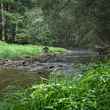




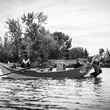










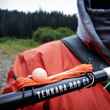



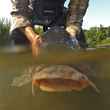
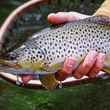

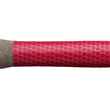

Comments
Peter Arthur replied on Permalink
Kudos to Hatch magazine for thinking way outside the box with this article. I appreciate variety and I'd like to see more articles that don't necessarily involve fly fishing. Outdoor cooking is a thing now you know..
Pages